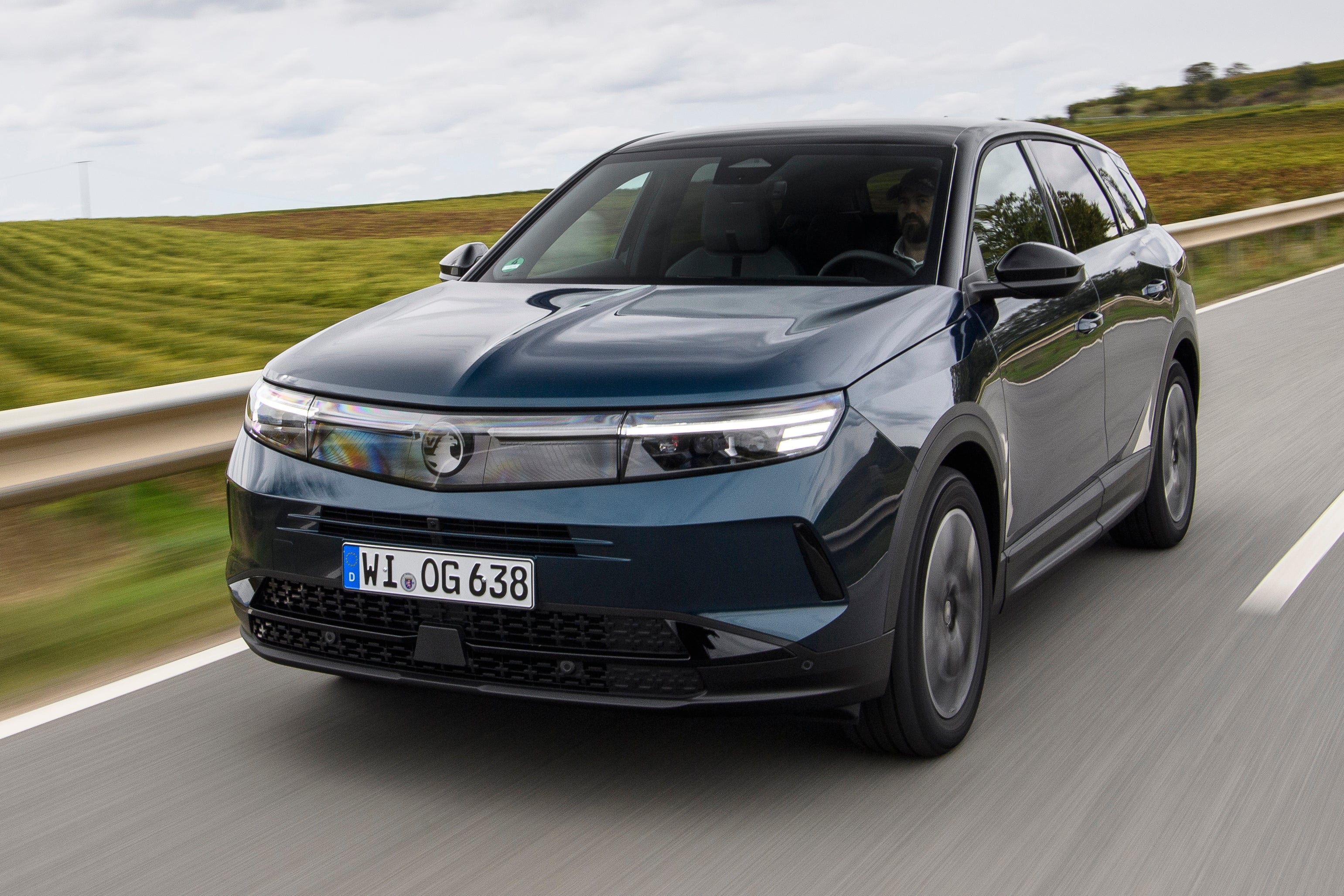Vauxhall Grandland Review 2025: Price, specs & boot space
Written by Ivan Aistrop
Quick overview
Pros
- Very roomy and practical
- Pretty well equipped
- Cheaper than the electric version
Cons
- Very so-so on the road
- Poor refinement
- Interior quality not great
Overall verdict on the Vauxhall Grandland
"n a section of the car market that’s as crowded as the midsize family SUV sector, it’s very difficult to stand out. Vauxhall’s new flagship SUV, the Grandland, has its work cut out then, so how will it bid to outshine its rivals and win the affection of buyers? Find out in our Vauxhall Grandland review."
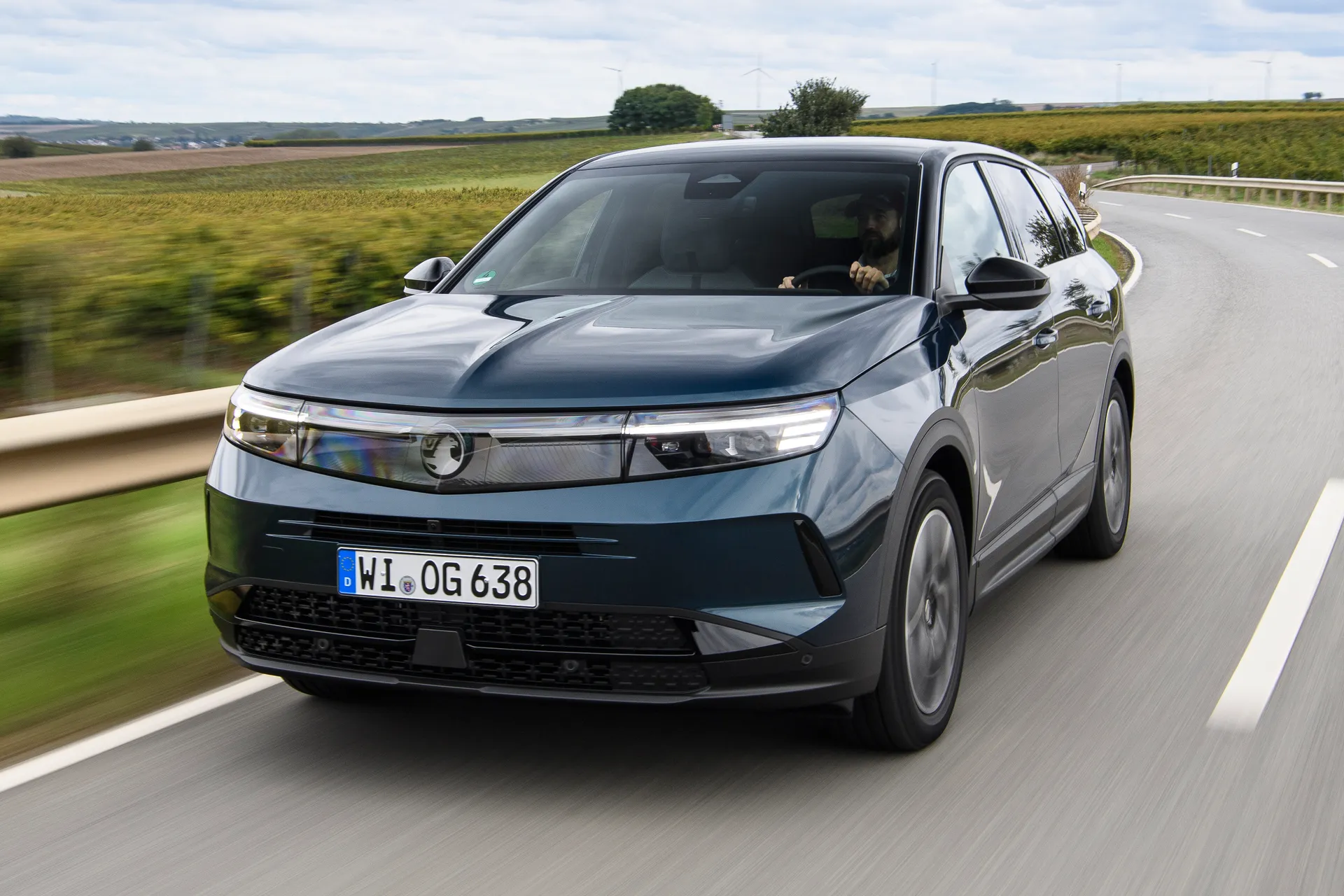
Why so crowded? Well, simply because this section of the market is so very popular, and as a result, pretty much every major manufacturer has a player in the midsize SUV game, and in many cases, two or three. And the mix of models on offer houses some real talent.
In order to immediately break through the noise, Vauxhall has tried to make the Grandland look as impactful as possible. It has the ‘Vizor’ front-end styling that has made its way onto pretty much every Vauxhall model since it made its debut on the Mokka a few years ago, but in the case of the Grandland, there’s a difference. That comes in the form of a bold new lighting signature. The rear end has horizontal light bars flanking an illuminated Vauxhall nameplate, while on the top two trims, you get a similar arrangement up front, finished off with a lit-up Vauxhall Griffin badge.
Another area in which the Vauxhall Grandland stands out is on practicality. It’s impressively roomy inside for passengers, and the large boot has some clever touches to make it even more versatile. True, interior quality isn’t as plush as it is in many rivals, but everything feels solidly built.
At launch, the Grandland is available in two forms, a fully electric version, and a petrol-powered mild hybrid. For clarity, we’re only talking about the mild hybrid in this review: you can read our Vauxhall Grandland Electric review separately.
The hybrid uses a 1.2-litre petrol engine and an electric motor to deliver a family-friendly mix of performance and economy, but as we’ll find out, refinement isn’t quite so impressive. Unfortunately, neither is ride comfort.
As family SUVs go, the Vauxhall Grandland is a convincing effort that does a decent job in most (but not all) areas, but looks aside, we can’t see much that really marks it out compared with the competition.
Looking for a used car for sale? We've got 100s of Vauxhall Approved Used Cars for Sale for you to choose from, including a wide range of Vauxhall Grandland cars for sale.
Is the Vauxhall Grandland right for you?
The Vauxhall Grandland will suit you if you’re after a family car with lots of space and practicality, and that should stand up well to hard daily use. It’ll also suit if you’d like a family car that looks a bit different to the other options out there. To be honest, though, we can’t think of anything it does better than most rivals, so it’s a little hard to spot its USP.
What's the best Vauxhall Grandland model/engine to choose?
There are two versions of the Vaxhall Grandland available, the petrol-powered mild hybrid version that we’re talking about here, and an all-electric version that we’ve written a separate review of. If we’re being honest, though, it’s the electric version that’s the better car of the pair, because its performance is more readily available and it’s a lot quieter: the petrol engine in the mild hybrid can get rather noisy. Regarding trim levels, even the base-level Design trim doesn’t want for much, but even so, you might want to upgrade to the GS or Ultimate for the distinctive lighting design at the front end.
What other cars are similar to the Vauxhall Grandland?
The Vauxhall Grandland has countless rivals in the midsize family SUV sector: this is a hugely popular sector of the market, so just about every manufacturer there is offers at least one model, if not two or three. The big sellers in the sector are the Nissan Qashqai, Kia Sportage, Hyundai Tucson and Ford Kuga, not to mention the Peugeot 3008 with which the Grandland shares in underpinnings.
Comfort and design: Vauxhall Grandland interior
"The Vauxhall Grandland’s seats have been certified by a German outfit called AGR (Aktion Gesunder Rucken), which essentially translates into ‘The Campaign for Healthier Backs’. That means they’re scientifically proven to have all the right support in all the right places."
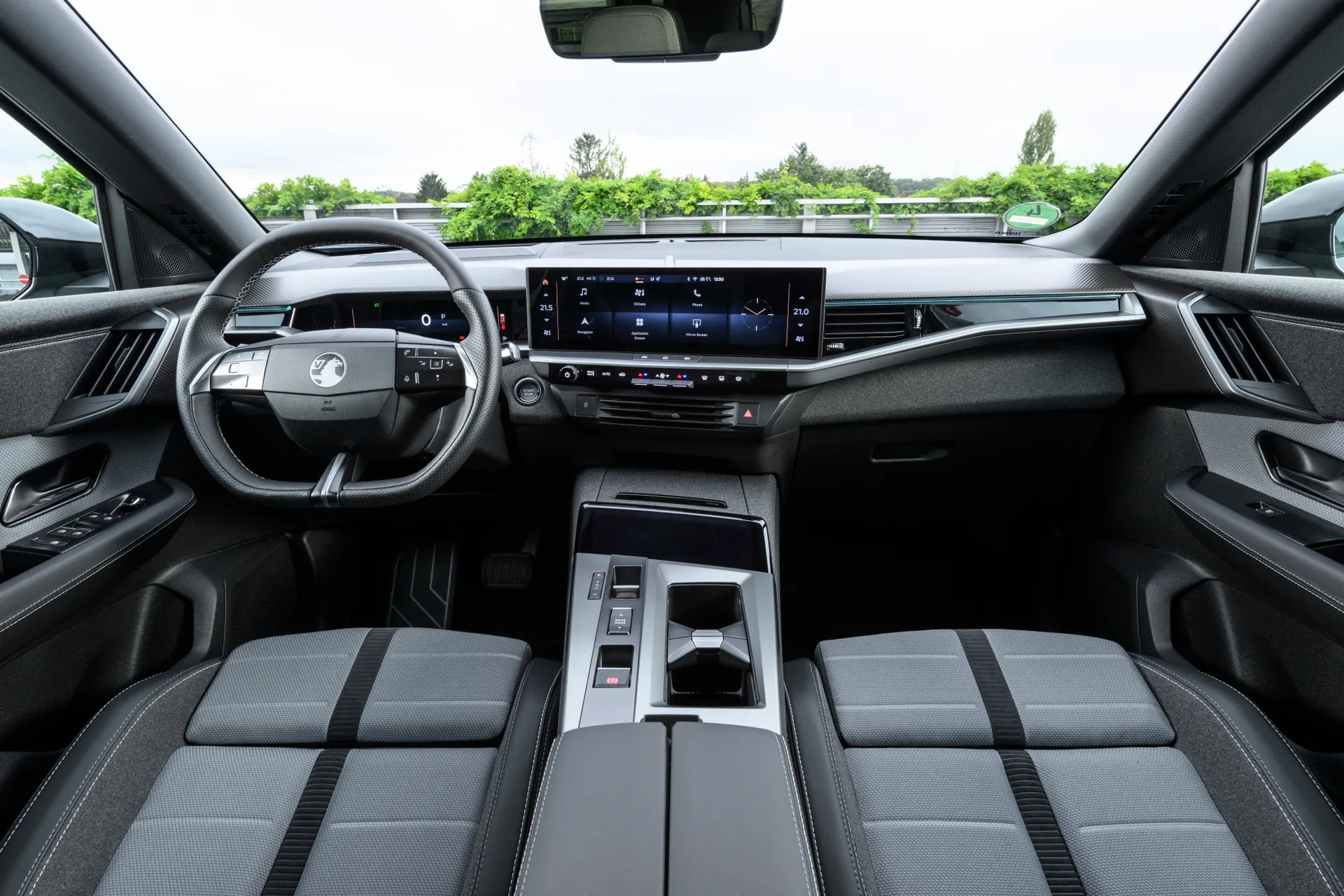
Sure enough, we didn’t struggle for comfort after a long day at the wheel, but to be completely honest, we didn’t find them to be any more comfortable than your average car seat. We also found it a bit difficult to adjust the angle of the backrests, because the wheel adjuster with which you do so is placed down in a small gap between the side of the seat and the door trim, and the fact that it’s tucked away behind the mounting of the seat belt socket makes it even more difficult to get at.
Forward visibility is absolutely fine at the front of the Vauxhall Grandland, but a smaller-than-average rear window does mean that your rear view isn’t as panoramic as in some rivals. It’s worse when it rains, too, because the rear wiper only clears a small section of the pane.
Quality and finish
At first glance, the interior of the Vauxhall Grandland looks quite interesting. There are lots of different shapes, surfaces, colours and textures on display, all mixed up in intricate ways. What you might notice most is that lots of fabric is used to cover parts of the dashboard and doors, and as is the fashion these days, the fabric used is fashioned out of recycled materials.
Look at the structural plastic parts that sit between the flash bits, though, and you’ll find that they all have a hard, shiny finish that’s not particularly appealing, either to the eyes or the fingertips. You won’t find a single surface covered in soft-touch plastic, even on top of the dashboard. In short, many rivals feel posher, and that’s before you’ve encountered the even more functional plastic that are found lower down in the footwells and on the bottom of the doors.
Infotainment: Touchscreen, USB, nav and stereo in the Vauxhall Grandland
In all versions of the Grandland, there’s a 10.0-inch digital driver display behind the steering wheel that delivers all your important driving information. In addition, there’s another screen mounted in the middle of the dashboard. In entry-level Design cars, this is a 10.0-inch touchscreen, and it supports wireless Apple CarPlay and Android Auto, along with Bluetooth and DAB radio. You also get six speakers and a single USB-C port.
Vauxhall Grandland GS and Ultimate trims, meanwhile, get a larger 16-inch touchscreen, plus connected navigation on top. You also get another two USB-C ports, and something called the ‘Pixel Box’, which is basically a see-through compartment at the base of the dashboard that houses a wireless phone charger. Ultimate trim adds an upgraded FOCAL sound system.
So far, we’ve only experienced the more advanced of the two systems. The big screen looks pretty good at first glance, with sharp graphics and stylish design. However, questions remain about the system, because the cars we drove were pre-production examples, and the software they were running wasn’t quite finished and signed-off. We experienced a few glitches - such as a speedo that didn’t work, alarmingly - but Vauxhall assures us that any gremlins will be exorcised before any customer cars are shipped.
Even with this caveat, we found that the user-interface isn’t all that easy to navigate. You’re faced with a lot of on-screen icons, and many of these are ambiguously designed so that it’s not immediately clear what function they apply to. You need to do quite a lot of swiping and scrolling to access various parts of the interface, too, so we think getting used to the system will take a bit of time.
Space and practicality: Vauxhall Grandland boot space
This area is arguably the Vauxhall Grandland’s strongest. It’s a bigger car than the one it replaces, and marginally bigger than many of its rivals. In terms of dimensions, it measures 4,650mm long, 2,103mm wide (including door mirrors), and 1,665mm tall, while the wheelbase is 2,784mm (interestingly, that’s 11mm shorter than in the electric version).
Happily, that translates into lots of interior space. The diver and front passenger get lots of space to stretch out, and so do those sitting behind, because there’s a really generous amount of legroom and headroom. Some rivals have sliding rear seats that allow you to trade some of the rear legroom for a bit more boot volume, which the Grandland doesn’t have, but in terms of outright space, you’ll have no complaints.
A pair of gangly adults will be very happy in the back, then, but things become a little more cramped if you squeeze in a third: everyone will fit, but hips and shoulders will be pressed together due to the width of the cabin, so you’ll probably only want to stick it for short journeys. That said, things are made a bit more comfortable for whoever sits in the middle thanks to a wide central seat and a rear footwell that’s almost flat.
The boot is just as impressive at 550 litres, which is large even by the generous standards of the class. There’s also a false floor that allows you to turn some of that space into a concealed storage area. The rear seats fold down in a 40-20-40 split, which is a more versatile arrangement than the 60-40 split found in some rivals, and when you do so, that variable boot floor levels off both the load lip and the step up to the folded rear seatbacks. There are no steps in your extended load area as a result, but there is a slope, because those seatbacks lie at a slight angle.
Handling and ride quality: What is the Vauxhall Grandland like to drive?
"In a car that’s destined to carry families like the Vauxhall Grandland is, the dynamic trait you want above all others is a comfortable ride to keep everyone on board happy and relaxed. Unfortunately, the big Vauxhall doesn’t deliver on that as well as many of its rivals."
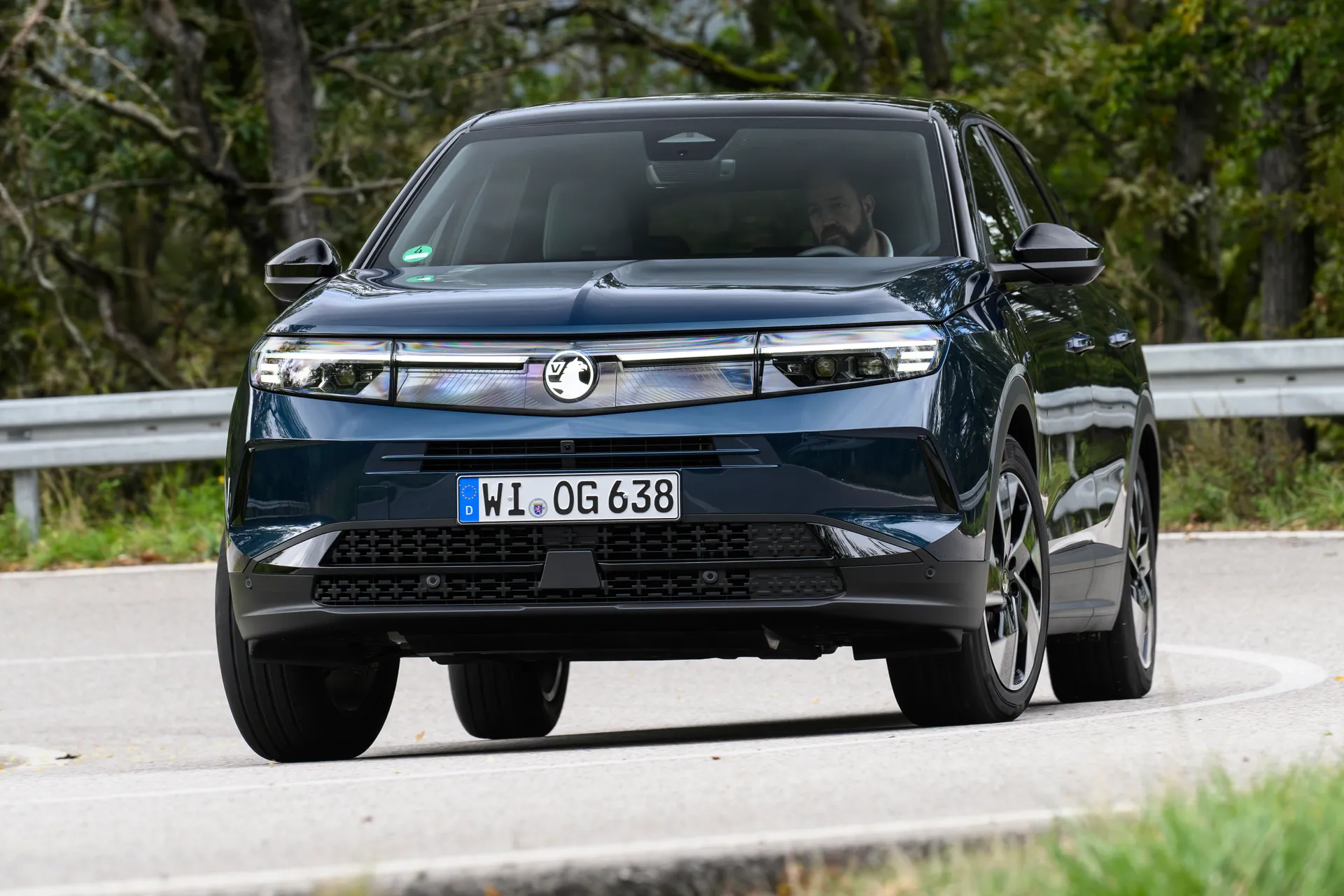
You might point to the fact that the petrol-powered version of the Vauxhall Grandland has a less sophisticated torsion beam rear suspension than the all-electric version, which has a multilink setup. In truth, however, it makes very little difference. Both cars have an underlying firmness that makes them tremble and fidget constantly, even on road surfaces to appear to be immaculately smooth. That applied to the vast majority of the surfaces we encountered on our German test route, and it’s also true that the few bumps we did find caused a pronounced wallop from underneath.
This would be easier to understand - and forgive - if it meant that the Vauxhall Grandland delivered sharp, involving handling. However, the car feels very average on that score as well. You feel the body lean over significantly as you turn a corner, and combined with steering that’s super-light and completely lacking any feeling of connection, you get the distinct feeling that the car wants to run wide, even at fairly low to moderate speeds. Selecting Sport mode adds more weight to the steering, which does help to instil a wee bit more confidence, but there’s also an oversensitivity to the wheel around the straight-ahead position that makes things feel a little twitchy, and this never goes away.
What engines and gearboxes are available in the Vauxhall Grandland?
Like we’ve said, the Vauxhall Grandland is available in both electric and 48-volt mild-hybrid petrol forms, but for the purposes of this review, we’re talking exclusively about the mild hybrid. It combines a turbocharged three-cylinder 1.2-litre petrol engine with an electric starter-generator, delivering 134bhp to the front wheels via a six-speed dual-clutch automatic gearbox.
The electric motor helps out the petrol engine when moving off or accelerating, and Vauxhall says you can run around on electric-only power for up to 50% of the time at low urban speeds, up to a maximum of about a kilometre at a time. You’ll have to be extremely careful with the throttle pedal in order to achieve this, though, because we found that it didn’t need too much provocation before the petrol engine chimes in.
In truth, performance is pretty modest whatever you do with the throttle pedal: even at full tilt, the car does 0-62mph in a minimum of 10.2 seconds. And that leisurely pace is exacerbated by the fact that the transmission favours a high gear whenever it feels it can get away with it. However, you don’t have to be too beastly with the accelerator pedal before the automatic gearbox kicks down, sending the revs of the petrol engine sky high, but not really providing all that much more in the way of forward motion.
Refinement and noise levels
Like we just said, if you can keep your throttle inputs subtle enough, then you can run around at very low speeds on just electric power for short distances, whereupon the Vauxhall Grandland is very quiet indeed. And when the petrol engine first cuts in, it does so fairly unobtrusively.
However, when you push the accelerator pedal a fraction harder to ask for a bit more acceleration - and we’re really not talking a lot here - the gearbox becomes overly keen to kick down, making the petrol engine rev loudly, and sending vibrations through the pedals and the floor. And such is that keenness to kick down that this all happens on an annoyingly regular basis.
It settles down at a constant motorway speed, and road- and wind noise are adequately well suppressed, too. However, try and increase your speed by a couple of mph to get past other traffic, and the engine will make its plight known once again.
Safety equipment: How safe is the Vauxhall Grandland?
Adaptive cruise control is provided across the entire Vauxhall Grandland range, as is lane departure warning, lane keep assist, high beam assist, traffic sign recognition, and eight airbags.
Go for the range-topping Ultimate version, meanwhile, and you also get the catchily-titled Intelli-Drive 2.0 ADAS system. This includes lane change assist, semi-autonomous lane change, rear cross traffic alert, and curve speed adoption.
The latest generation of the Vauxhall Grandland hasn’t been crash-tested by Euro NCAP yet, but we’ll update this review as soon as it has.
MPG and fuel costs: What does a Vauxhall Grandland cost to run?
"According to the official WLTP figures, the mild hybrid versions of the Granland will return an average of 51.4mpg when specced in Design and GS trims, and 50.4mpg in Ultimate spec."
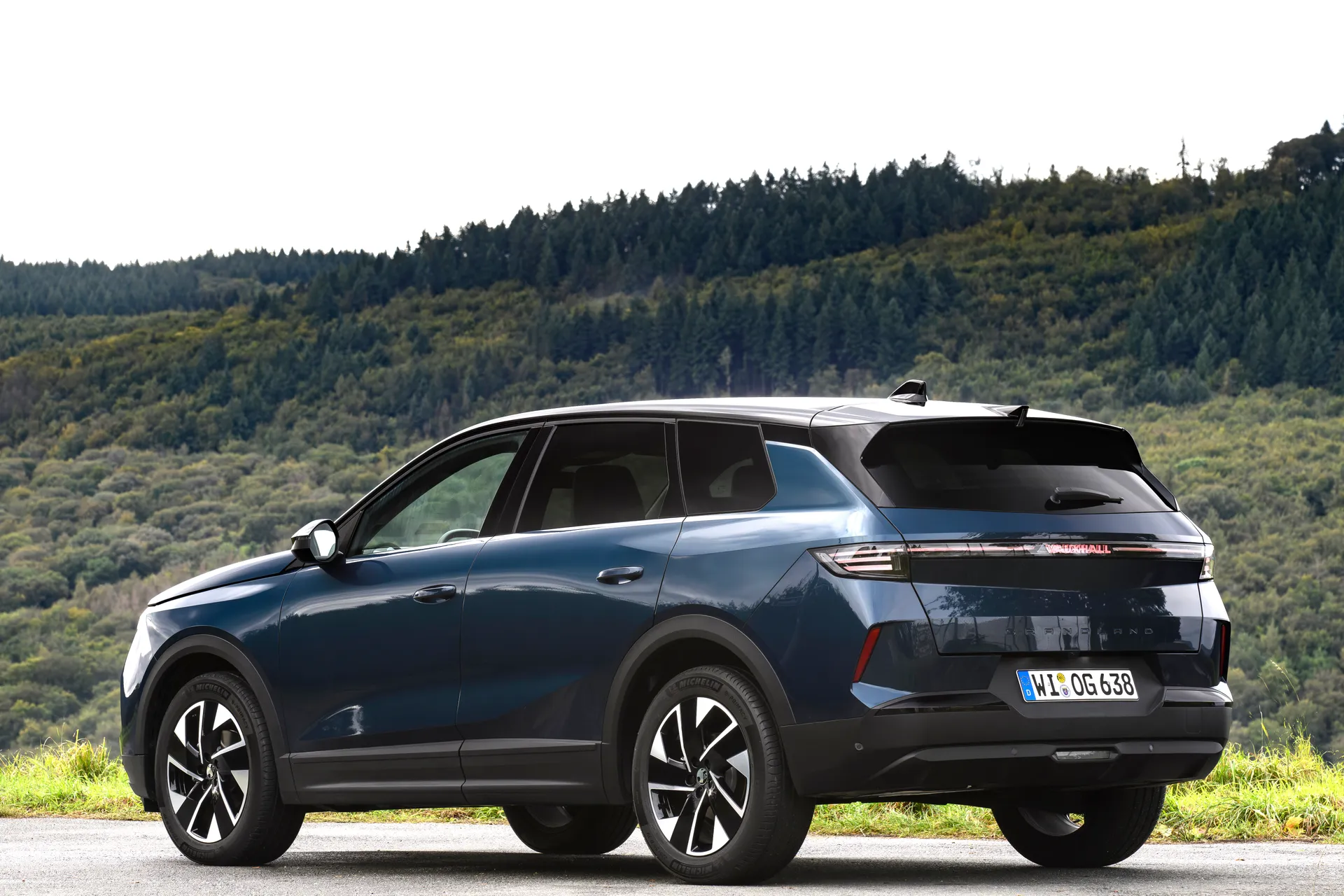
Those figures are better than those of key competitors such as the mild hybrid versions of the Volkswagen Tiguan. We wouldn’t expect to get those figures in the real world, mind, especially given how often the petrol engine is made to work its socks off by the gearbox.
Vauxhall Grandland reliability and warranty
In the latest HonestJohn.co.uk Satisfaction Index, Vauxhall came in last place overall in the manufacturer standings, out of a group of 29 carmakers. This was for overall customer satisfaction rather than reliability specifically, although reliability does play a part in the assessment, so it might still make you worry that mechanical maladies might be around the corner.
This certainly isn’t good, but at the same time, it might not be as bad as it first appears. The study’s lists of the worst-performing models from a reliability point of view specifically are certainly not over-endowed with Vauxhalls - there’s only one in the bottom 20 - so it’s likely that owners’ grumbles lie in other areas of the ownership experience, rather than with mechanical dependability. What’s more, the latest Grandland is an all-new model that uses an all-new platform, so it certainly won’t have contributed anything towards this result.
It’s still true, though, that the warranty arrangement could be better. You get three-year, 60,000-mile cover for the majority of the car, and eight-year, 100,000-mile cover for the battery. That’s the bare minimum you should expect on any new car these days, and many manufacturers do a lot better.
Vauxhall Grandland insurance groups and costs
The Vauxhall Grandland is so new in fact that insurance groups are yet to be announced for the car. Once they are, we’ll update this review.
VED car tax: What is the annual road tax on a Vauxhall Grandland?
The mild hybrid version of the Grandland we’re talking about here qualifies for a discount on your annual VED tax bill compared with a regular petrol or diesel car. However, that discount amounts to precisely a tenner, so it’s unlikely to play a major role in your buying decision: you’ll pay £180 per year for a now-metaphorical tax disc, rather than £190.
No version of the mild hybrid costs more than £40,000 when brand new, so you shouldn’t have to pay the luxury car surcharge, which sees £390 added to your annual bill between years two and six of the car’s life. Beware, though, that going for the Ultimate trim and adding a couple of optional extras can take the price of your car over that threshold, landing you with the added tax liability.
Vauxhall Grandland price
"Prices for the mild hybrid version of the Grandland start around £35,000 for the Design and rise to around £38,500 for the Ultimate. That’s less than you’ll pay for the electric version, obviously, but compared with rivals, it doesn’t look that competitive. Both the Kia Sportage and Ford Kuga can be had for less.."
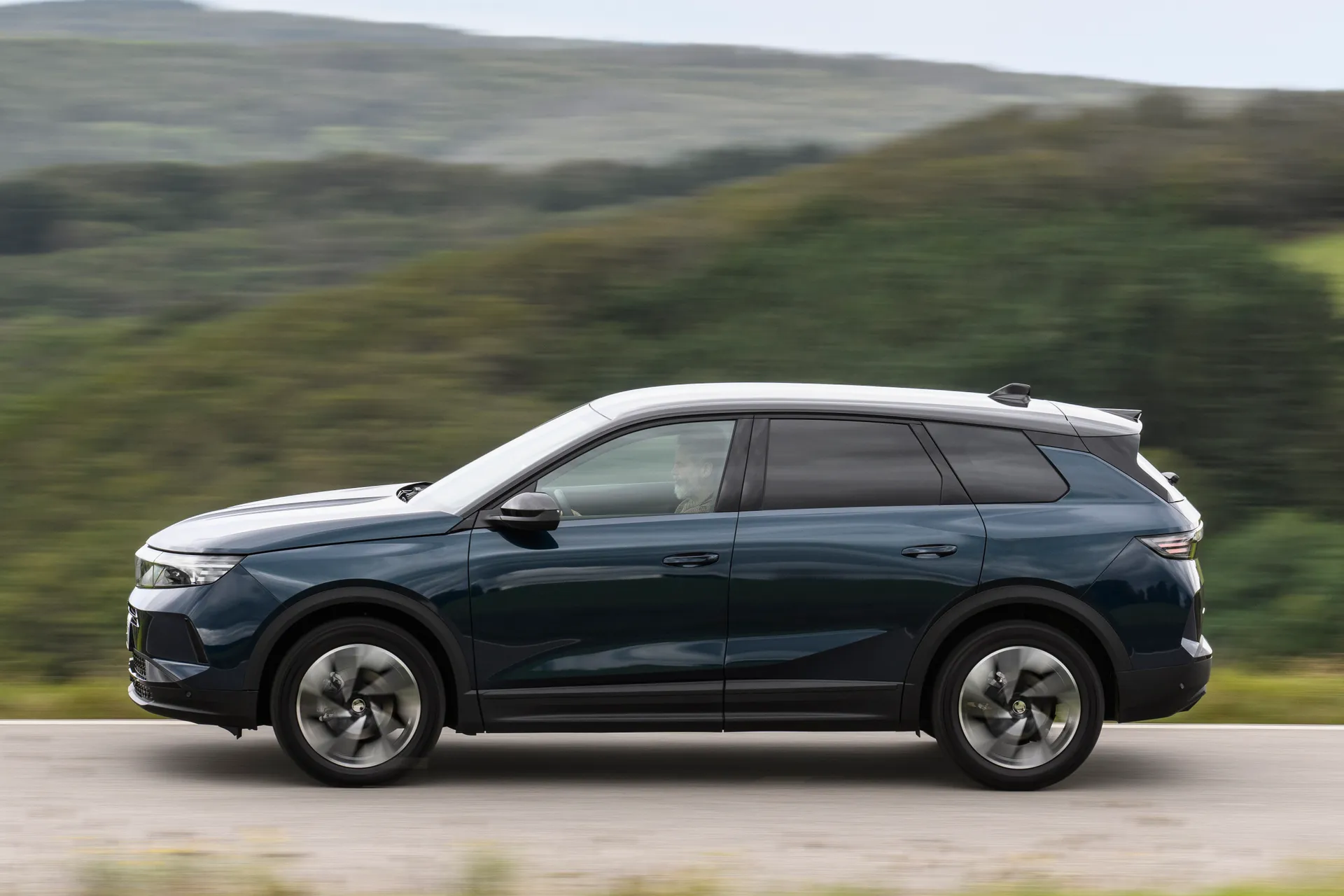
And because the Grandland is still so new, you won’t see significant numbers of pre-owned examples hitting the used car market any time soon.
The first ones that do will most likely be ex-demonstrator models, or cars that have been pre-registered by dealers in order to meet sales targets. These will be as-good-as-new in condition, and have extremely low mileage, but you’ll still be able to snaffle them for a very useful four-figure discount.
Trim levels and standard equipment
On top of all the infotainment and safety kit that we’ve already mentioned, the entry-level Design version of the Grandland comes with LED headlights and tail lights, alloy wheels, power folding door mirrors, automatic lights and wipers, front-and rear parking sensors, powered front- and rear windows, adaptive cruise control, dual-zone climate control, and the illuminated Vauxhall nameplate on the rear end.
To that, the GS adds the extra illumination at the front end of the car, including the glowing vauxhall badge flanked by illuminated horizontal lines that connect the headlights, while those headlights are also more sophisticated Intelli-Lux HD items. The car’s looks are further enhanced by darkened rear windows and a black roof. GS trim also adds a heated steering wheel, heated front seats, ambient lighting and a reversing camera.
Ultimate trim sits at the pinnacle of the Grandland range, and gives you a heated windscreen, a head-up display, a panoramic roof, a power tailgate, and 360-degree cameras.
Ask the heycar experts: common questions
Is the Vauxhall Grandland a good car?
Is the Vauxhall Grandland an SUV?
Is the Vauxhall Grandland reliable?
Get our latest advice, news and offers
Keep me updated by email with the latest advice, news and offers from heycar.
By submitting you agree to our privacy policy
